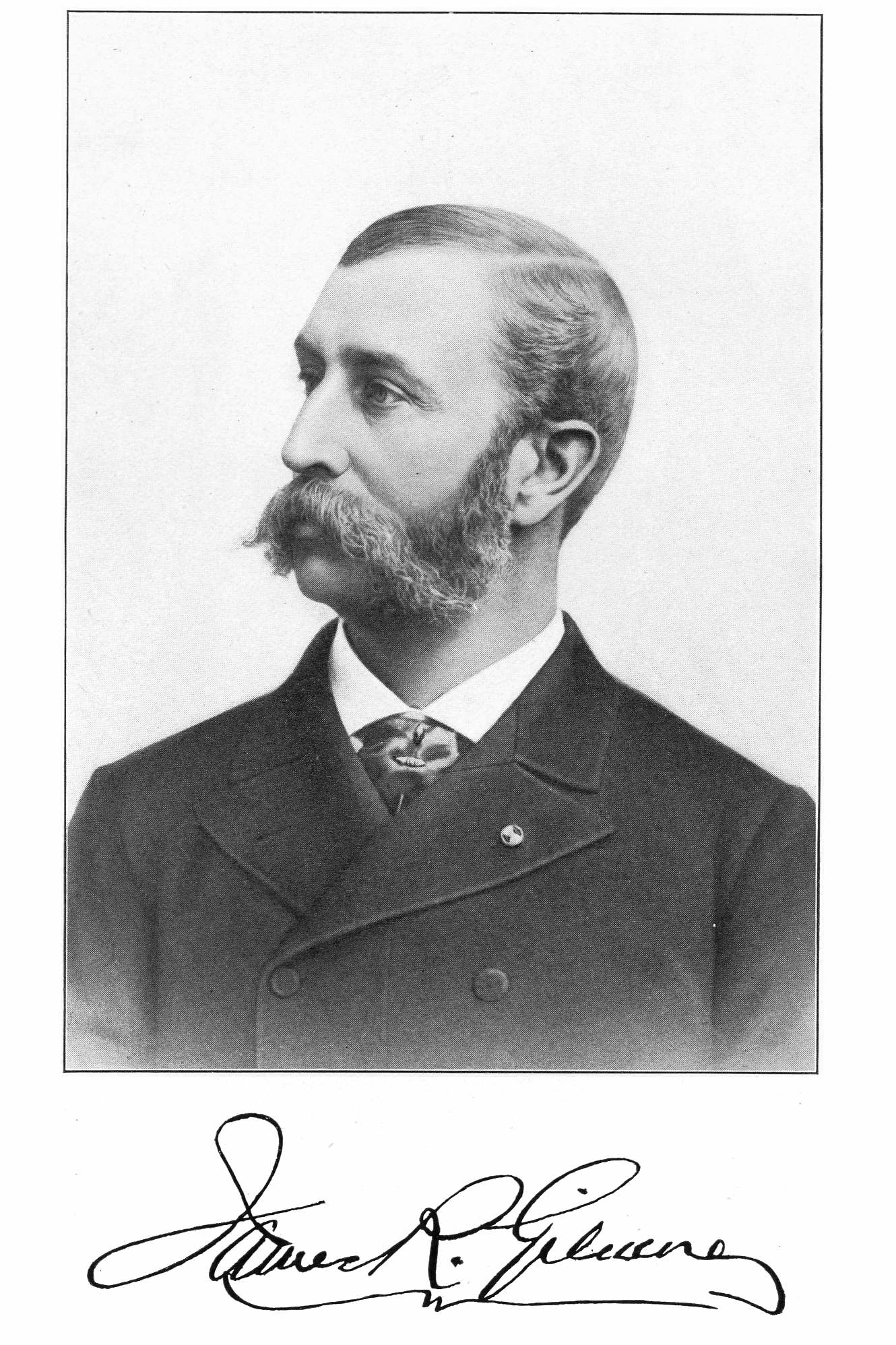Husband James Ross Gilmore 1

Born: - Chambersburg, Franklin Co, PA
Christened:
Died:
Buried:
Father: William Gilmore (1799-1852) 1
Mother: Martha Kirby (1806-1886) 1
Marriage: 1872 2
Wife Harriet Elliott Beatty 2
Born:
Christened:
Died:
Buried:
Father: James Beatty ( - ) 2
Mother: Isabella Elliott ( - ) 2
Children
1 M Walter Beatty Gilmore 2
Born:
Christened:
Died:
Buried:
2 M William Blair Gilmore 2
Born:
Christened:
Died:
Buried:
General Notes: Husband - James Ross Gilmore
He was educated at the Chambersburg Academy. After leaving school he was engaged with the engineering department of the Franklin Railroad, later the Cumberland Valley Railroad. He afterward went to Philadelphia and became a clerk in the Union Bank. In 1861, at the breaking out of the Civil war he was a volunteer in the United States service, becoming an assistant in the United States Military Telegraph Corps. He assisted in building all the telegraph lines that connected the military camps with the capital, had charge of the first outpost office established in the army, and became Superintendent of the Corps in July, 1861. He returned to Chambersburg in the winter of 1861, and in the summer of 1862 he volunteered as a private in Company A, 126th P. V. I. He was with his company at Antietam and with Headquarters 5th Army Corps during the campaign ending with the battle of Fredericksburg, Dec. 13, 1862. After the battle of Fredericksburg he was ordered to Washington for duty in the War Department under the immediate orders of the Secretary of War. He remained in Washington until the spring of 1863, when he was ordered to Fortress Monroe, Virginia, and thence to Newbern, North Carolina, where he served during the siege and the yellow fever epidemic. In November, 1864, he was appointed a captain of United States Volunteers, and assigned to the staff of Major-General John G. Foster, U. S. A., and later to that of Major-General Quincy A. Gillmore, U. S. A. He was also temporarily attached to the staff of General Sherman, and was with him during the siege and at the capture of Savannah. Immediately after the fall of the city he was ordered to cooperate with an officer of the navy in blowing up and removing obstructions in the Savannah River placed there during the Rebellion. While on staff duty he took part in the siege of Charleston, and was with the first Union Officers who entered that city and Fort Sumter at the surrender, Feb. 28, 1865. At the close of the war, during the period of reconstruction he served in Charleston, South Carolina, under Maj. Gen. Daniel E. Sickles, as department quartermaster and was thus engaged at the time of his muster out. Captain Gilmore was brevetted major and lieutenant colonel in 1865 for "meritorious services and devoted application to duty." He remained in the service after the close of the war until November, 1866, when he was honorably mustered out. Later he again entered the service under Maj. Gen. Q. A. Gillmore, with whom he served in the Engineer Department of the Army on duty in connection with the rebuilding of the fortifications in New York Harbor, and on the South Atlantic coast, and the river and harbor improvements in South Carolina, Georgia and Florida. Col. Gilmore's connection with Maj. Gen. Gillmore lasted twenty-two years, 1866-88. He was then transferred to Detroit, Michigan, serving under the orders of Colonel, afterward Major General, Ludlow, on the river and harbor improvements on the eastern shore of Lake Michigan, 1888-92. In the latter year he returned to Chambersburg with his family, where he then lived in retirement. He took an active part in the celebration of the centennial anniversary of the Chambersburg Academy in 1897, and was the master spirit of the Congress of the Scotch-Irish Society of America upon the occasion of its meeting at Chambersburg in 1901. He was one of the original members of the Kittochtinny Historical Society and was chairman of the executive committee for four years, 1898-1902, and a Vice President, 1903. In politics he was a Republican. He was a trustee of the Falling Spring Presbyterian Church, Chambersburg; a director of the Chambersburg Hospital; a member of the New York Commandery of the Military Order of the Loyal Legion of the United States; and of George Washington Post No. 103, G. A. R., New York City. He was also a member of the Army and Navy Club of New York; the Union of the Titans, New York; the United Service Club, Philadelphia; the Society of the Army of the Potomac; the Scotch-Irish Society of America, and the Pennsylvania Scotch-Irish Society.